

Ensuring Sustainable Supply Chains in China’s New Environmental Era
- New Challenges and new tools
by Johnny Browaeys, Greenment Environment, Shanghai, China
Summary: This white paper explains China’s “Environmental Storm”, a globally-unprecedented approach to environmental regulatory enforcement which is disrupting business operations and supply chains in China, and concludes with guidance on what leading businesses are doing to weather the Storm. |
1) China’sCentral Government Seeks to Transform the Country into an “Eco-Civilization”
Driven by rising popular aspirations for quality of life, as well as population-driven constraints on availability of land, clean water and clean air, China’s “Environmental Storm” comprises a country-wide program driven by the country’s strong Central Government. Meeting environmental objectives has in many cases become a higher priority than meeting GDP goals.
The Central Government has published ambitious Milestones for becoming an Eco-Civilization, personally endorsed by President Xi Jinping. In addition to addressing popular aspirations for environmental quality, China’s program also aims to rapidly reshape the national industrial landscape in line with urban and industrial planning, address industrial over-capacity, raise the bar for old industries, and accelerate the transition to “new” industries.
Supervisory Inspections by the China’s Ministry of Environment and Ecology (MEE) are being undertaken throughout the country (see Figure 1) to ensure new KPI’s reflecting environmental priorities are adopted at the city levels.
Figure 1: Supervisory Inspections by the Central Government (Source: China Ministry of Environment and Ecology) |

2) Strong Increase in Local Government Environmental Enforcement Initiatives
In response to the systematic country-wide pressure for improvement in environmental indicators, local government officials across the country are more frequently using highly disruptive enforcement tools, including mandatory production curtailment, (temporary) company closures, and forced relocations. Such environmental enforcement initiatives from local governments are guided by local environmental quality objectives as well as local industrial policies, each with their own timeline and priority. Priorities and timelines are different in different regions and for different industries.
Environmental enforcement initiatives by the local government can also be triggered by various episodic factors, such as weather conditions, infractions from nearby companies, recognition of poor performance of local environmental infrastructure (e.g. wastewater treatment or hazardous waste disposal), complaints from civilians, or high-profile events or inspections from the central government. All such local episodes can affect enforcement priorities.
Figure 2: Considerations of local enforcement agencies |
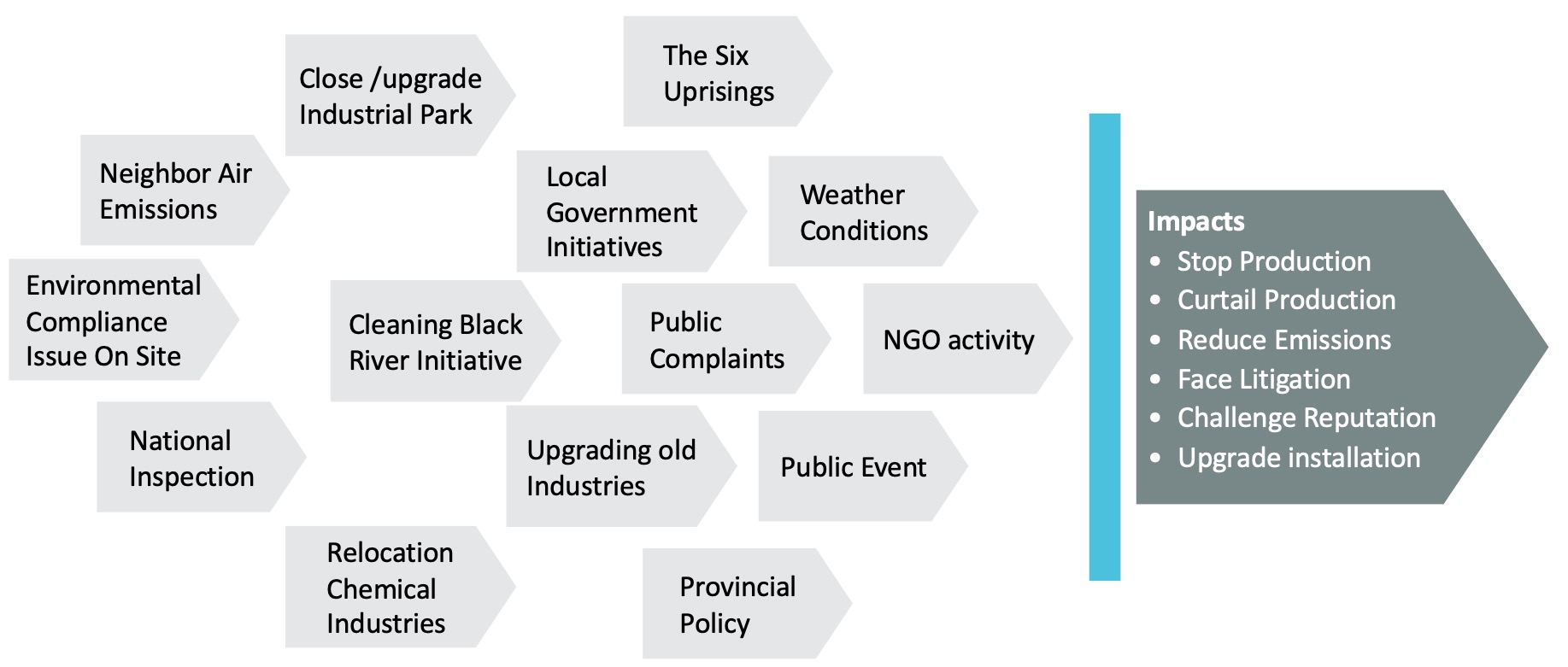
3) Prioritization of Risks to Production from New External Factors
The result of national and local environmental regulatory enforcement trends in China is that the bar for a manufacturing business to operate has been raised from environmental compliance to environmental performance.
To avoid business interruptions in this new era, manufacturing enterprises and their suppliers need to expand their focus from ensuring legal compliance at site level to include external weighting factors such as sensitivity of site surroundings and implementation of local policies or enforcement-related episodes. Additionally, they need to design an environmental performance management strategy that takes into account those new risks.
Surrounding and Policies are currently very dynamic and can be expected to remain so for many years to come, and at least until the Central Government Milestones for becoming an Eco-Civilization have been achieved.
Three-dimensional risk screening includes the Compliance dimension, where key risks comprise environmental permitting and compliance management for air, waste and wastewater on one hand, as well as the Surrounding and Policies dimensions on the other hand, where key risks include:
· Overall environmental policy trends;
· Local enforcement focus and action;
· Sectoral environmental policy and urban planning;
· Local environmental planning constraints
· Sensitivity of surrounding areas;
· Local environmental quality data that indicate environmental pressures;
· Local environmental infrastructure (e.g. wastewater and waste treatment);
· Performance of nearby factories and industrial parks; and,
· Weather conditions and high-profile public events.
Figure 3 provides an overview of this approach.
Figure 3: Overview of Three-Dimensional Risk Assessment (Source: Greenment Environment) |
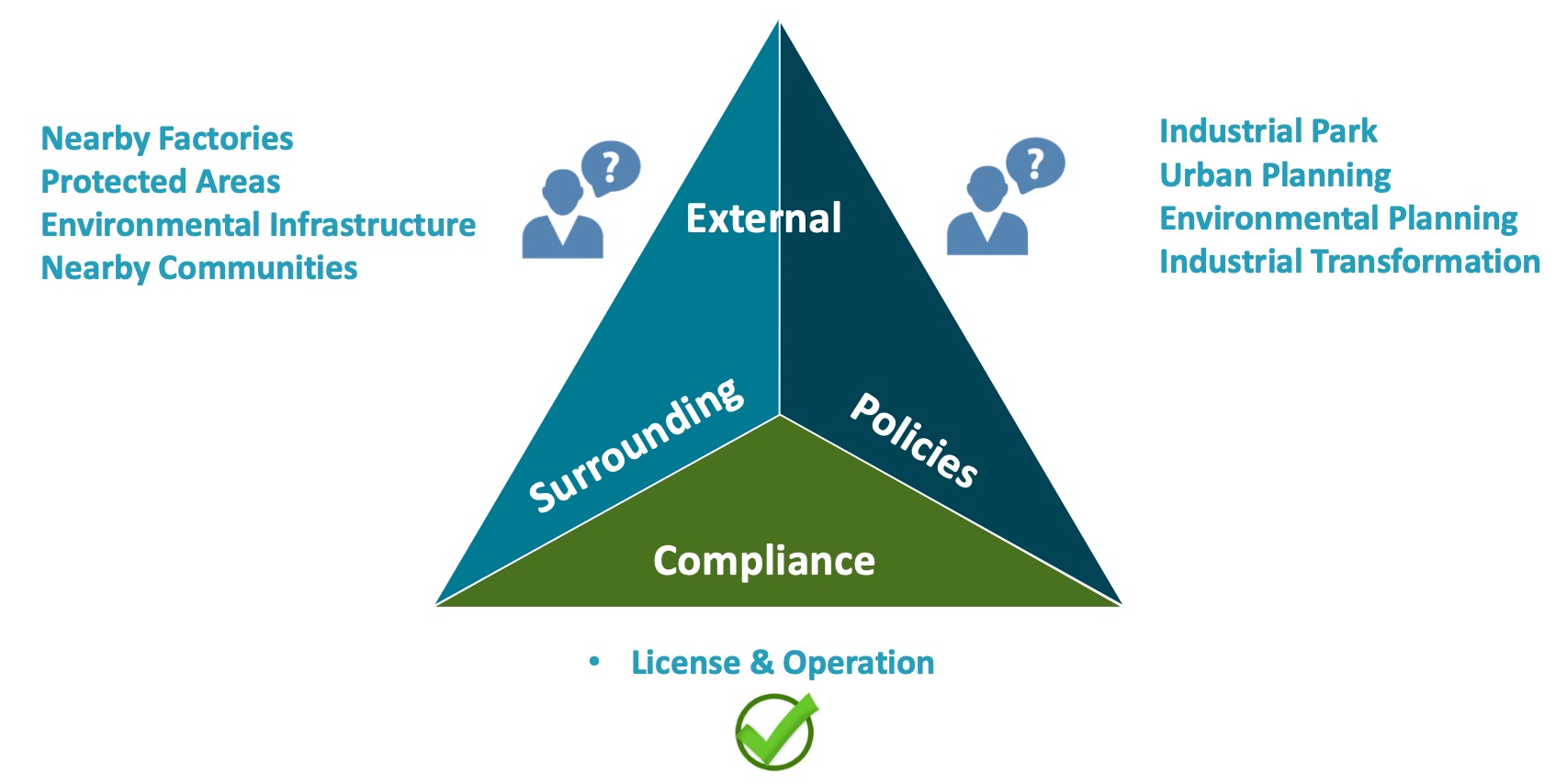
4) Paradigm Shifts in Environmental Data Transparency, Civilian Governance and Environmental Litigation
China has rapidly adopted environmental data transparency and civilian governance as key instruments to speed up the country’s transition to an Ecological Civilization. Environmental hotlines are provided to the public in all major cities and these cities are ranked by a nationwide Pollution Information Transparency Index (PITI) based on their disclosure of company violation records, supervision reports, monitoring data, etc. Although published by a Beijing-based IPE, a Non-Governmental Organization, the PITI enjoys near-universal official recognition in China and is widely referenced in official circles. The central government has also started publicly rating companies on their environmental performance.
This heightened transparency is leading to “multiple stakeholder supervision” by NGOs, social media and local communities. The legal framework now allows for unlimited fines and for criminal prosecution and litigation. Earlier this year, the local community in Taizhou City complained about contamination in a local river. The government picked it up and found out it was caused by a hazardous waste vendor who illegally had disposed waste acid into a river. The vendor was fined, and related people were imprisoned for environmental crimes. The vendor and six chemical companies who contracted the vendor were sued by a local NGO in the name of the public and had to pay 160 million RMB to compensate for environmental damage.
Figure 4: Rates of transparency and environmental hotline use in China (Source: Greenment Environment) |
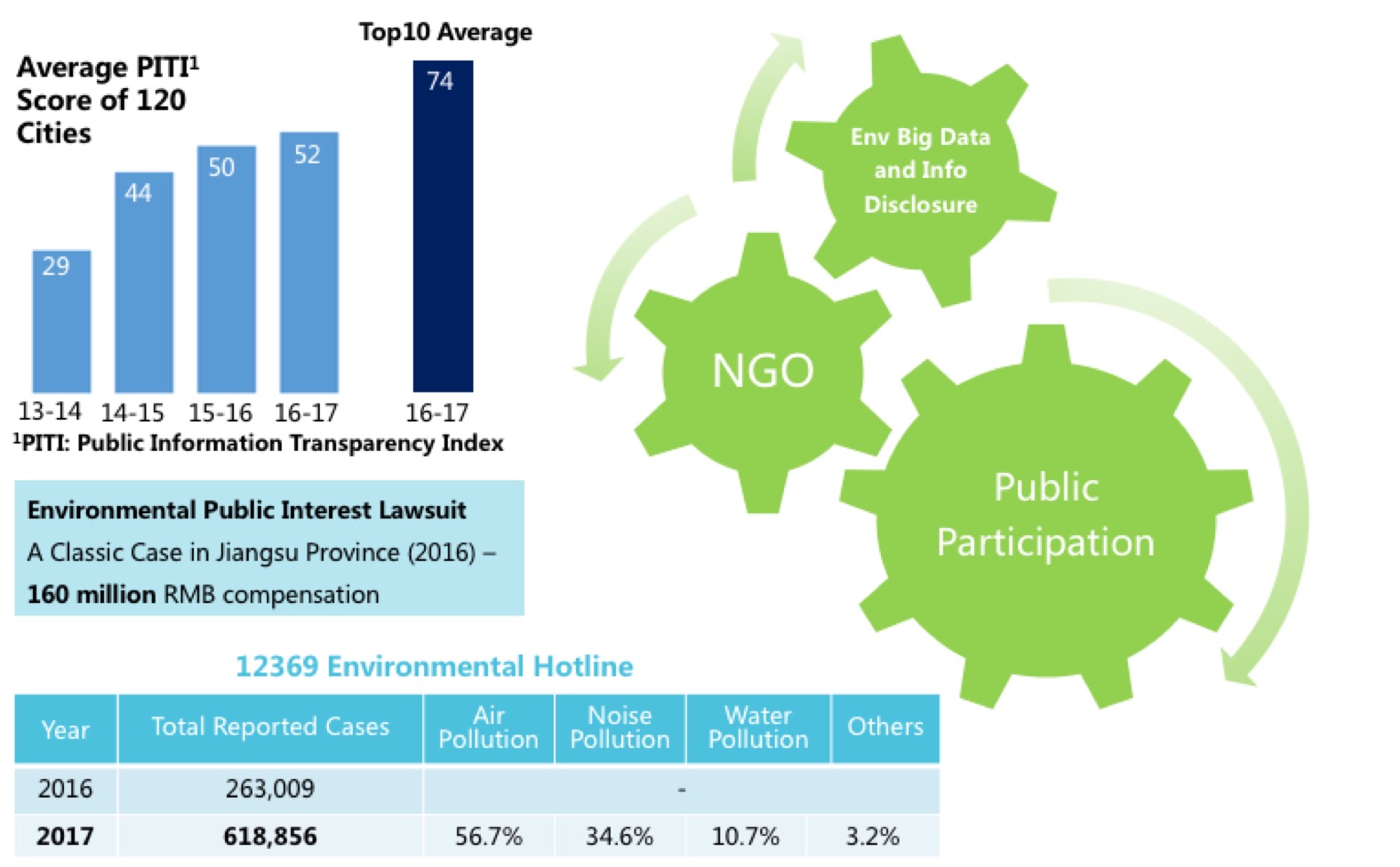
5) A New Approach for Data-enabled, Predictive Business Vulnerability Screening and Mitigation
A factory’s risk exposure depends on a combination of the above factors. Today’s data transparency also allows for enterprises to engage in data-enabled risk screenings that assess China manufacturing locations’ overall exposure to a combination of external factors.
Effective site and supply chain screening not only considers site compliance with current regulations, but also assesses vulnerability to dynamic external factors, and evaluates the risk of heightened regulator scrutiny or unilateral action.
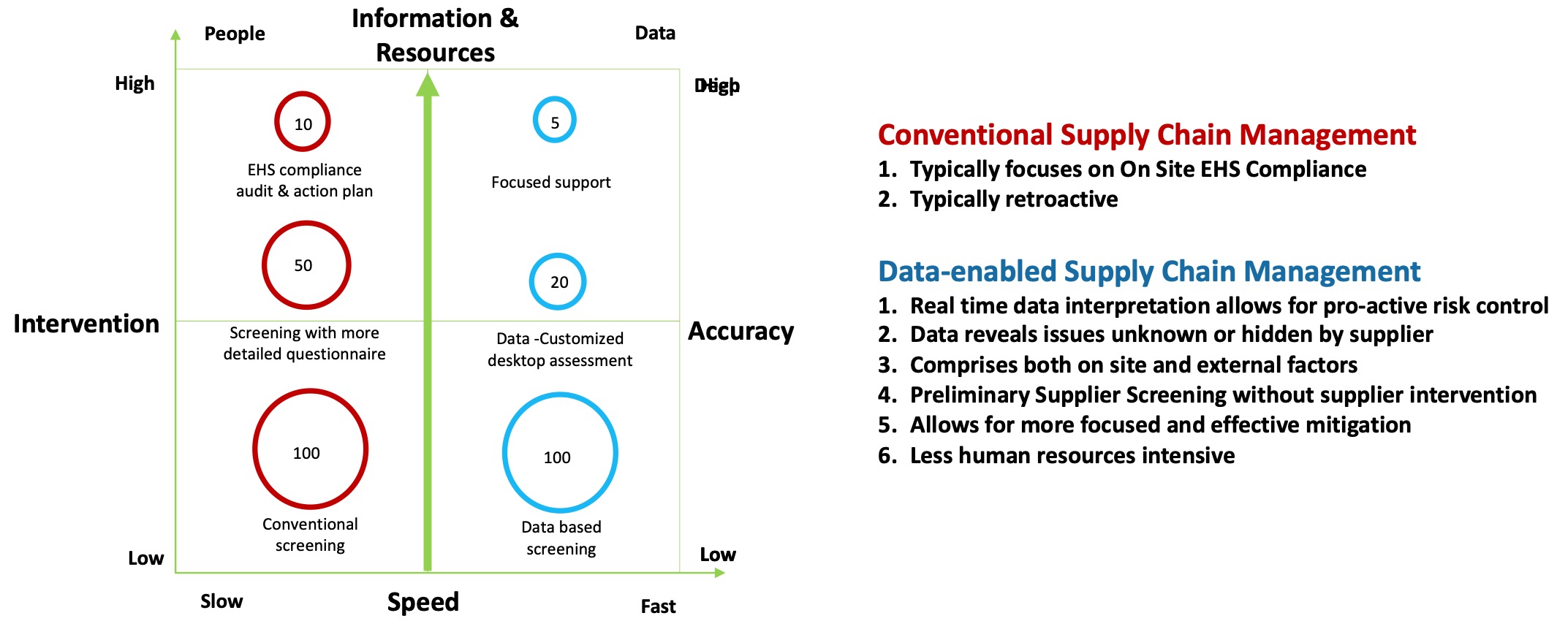
Figure 5: Evaluation of supply chain risk assessment options (Source: Greenment Environment) |
Data-enabled external risks screenings are fast, with no or minimal intervention at the site level and provide essential insights about business interruption risk specific to China which complement other conventional supply chain risk management tools. Whereas conventional auditing focuses on existing non-compliances, data-enabled external risk assessments allow for anticipation of impacts and real time monitoring of dynamic events that can trigger local enforcement initiatives.
Last but not least, data-enabled external risk assessments often also disclose site-specific vulnerability issues that can be unknown to site management or its customers.
6) Case Study in Business Vulnerability Mapping
GREENMENT was approached in early 2018 by a large manufacturing company confronted with serious financial damage after losing a key supplier due to an unexpected environmental enforcement action and failing to meet client demands for 3 months.
With over 200 operating or supplier sites in over 80 cities across China, the company used a Dynamic Environmental Risk Assessment (DERA) tool to efficiently obtain a snapshot of its immediate vulnerabilities in China in the new era of regulatory enforcement.
Using this approach, the company was able to quickly agree on fast, tactical mitigation measures of business-critical issues. Sites with a high-risk outlook were identified and categorized.
Figure 6: Snapshot of dynamic environmental risk assessment tool (DERA) (Source: Greenment Environment) |

The company immediately sought alternatives for high risk single-sourced suppliers to minimize major risks of business interruption, and also started pre-negotiating with existing suppliers, identifying back-up resources and evaluating options to stock materials in order to reduce the risk of cost impacts from supplier shortages.
The company also engaged with its key suppliers to mitigate identified issues and to proactively address their vulnerabilitiesby means of a supplier risk management and training program. Finally, the company also obtained insight in the impacts on its own China operations, allowing for strategic readjustments and reallocation of management resources.
7) Corporate Response Strategies
Most global corporations are unfamiliar with the external factors and policy dynamics with “Chinese characteristics” that prevail in China today. Current supply chain risk management systems developed as a global platform do not consider these factors appropriately. System upgrades that address the emerging operating environment in China will also help companies be better prepared for the future in other countries also.
Figure 7: New challenges and new opportunities for improved supply chain risk management (Source: Greenment Environment) |
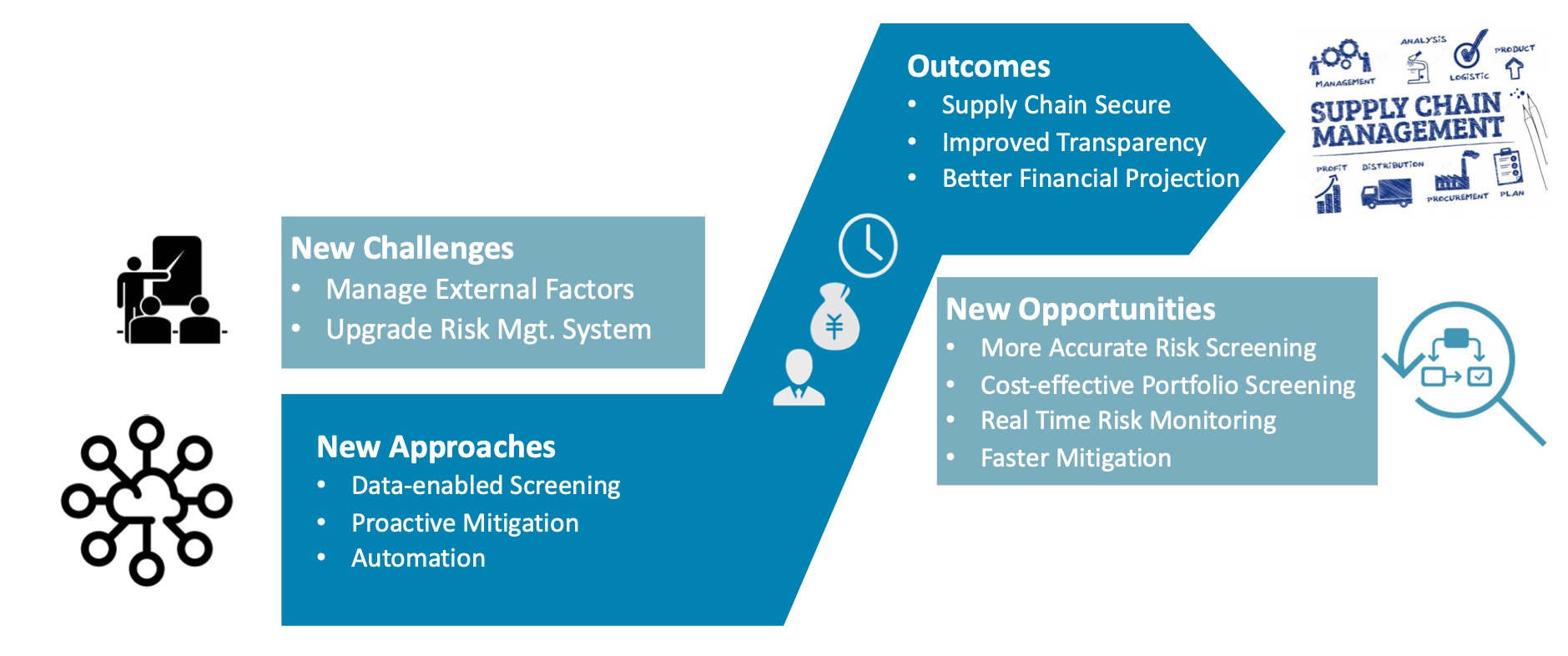
There are two common corporate response strategies:
1) Retroactive: companies that have not yet been hit or that are unaware of their vulnerability in China. These companies typically review the performance of their suppliers on an annual basis.
2) Proactive: companies that have been hit already in China, or leading companies that historically have been proactive in sustainability. These companies are establishing special risk control departments for China to systematically screen business critical risks, upgrade supplier risk management programs, and engage with Tier 1 suppliers to address Tier 2, 3 etc. supplier vulnerabilities.
The consultancy market has been primarily providing retroactive solutions such as supply chain auditing and regulatory compliance reviews. These are no longer sufficient to anticipate and proactively mitigate today’s risks in China.
Although environmental data is available, most companies do not have organized access to multiple environmental information sources, nor do they have time and resources to monitor the fast changes on a daily basis. Manual processing of information is time-consuming and not cost-effective. However, purely automated data-processing also does not suffice. Environmental data requires processing by an experienced analyst who understands the China context and can provide insight and solid recommendations for risk mitigation—supported by big data analytics.
Data analytics in combination with human analysis is the right approach to data-enabled risk screening, offering faster, more accurate, more cost-effective and more scalable solutions for large portfolios of suppliers. Early adopters of these new approaches will identify the suppliers of the future and will be the first ones to secure them.
TO CONTACT THE AUTHOR:
E-mail: Johnny.browaeys@greenment.net
WeChat: 13761894720
LinkedIn: https://www.linkedin.com/in/johnnybrowaeys/
ACKNOWLEGMENTS:
Ma Liqiang, who developed the SSP framework; Dr. Leo Liu, who provided the detailed DERA case studies; Liu Yang, who provided clarity in China’s policy and business context; the GREENMENT DERA team (Irene Xu, Jian Qiao, Melanie Dong and others) who supported me in producing this article; and Chris Hazen for final editing.
ABOUT GREENMENT:
GREENMENToriginated in 2012 when CH2M Hill decided to localize their environmental Business Unit. Today GREENMENT is the largest, premier EHS consulting and engineering services provider in China with around 100 consultants and serving 80% of Fortune 100 companies.
GREENMENT has the largest independent environmental information database in China with 10 years of history, over 1.4 billion environmental data points, nation-wide coverage, including central government, 31 provinces, and 338 cities. GREENMENT’s database covers over 3 million companies with real-time and historical on-line monitoring data, including over 1 million records of environmental complaints, governmental notices, and violation/penalty records that indicate environmental performance of any listed company. Over 3,000 information platforms (official, public and social media) are covered to provide targeted and precise identification of environmental information related to supervision / enforcement actions/plans and latest government movement in environmental campaigns.
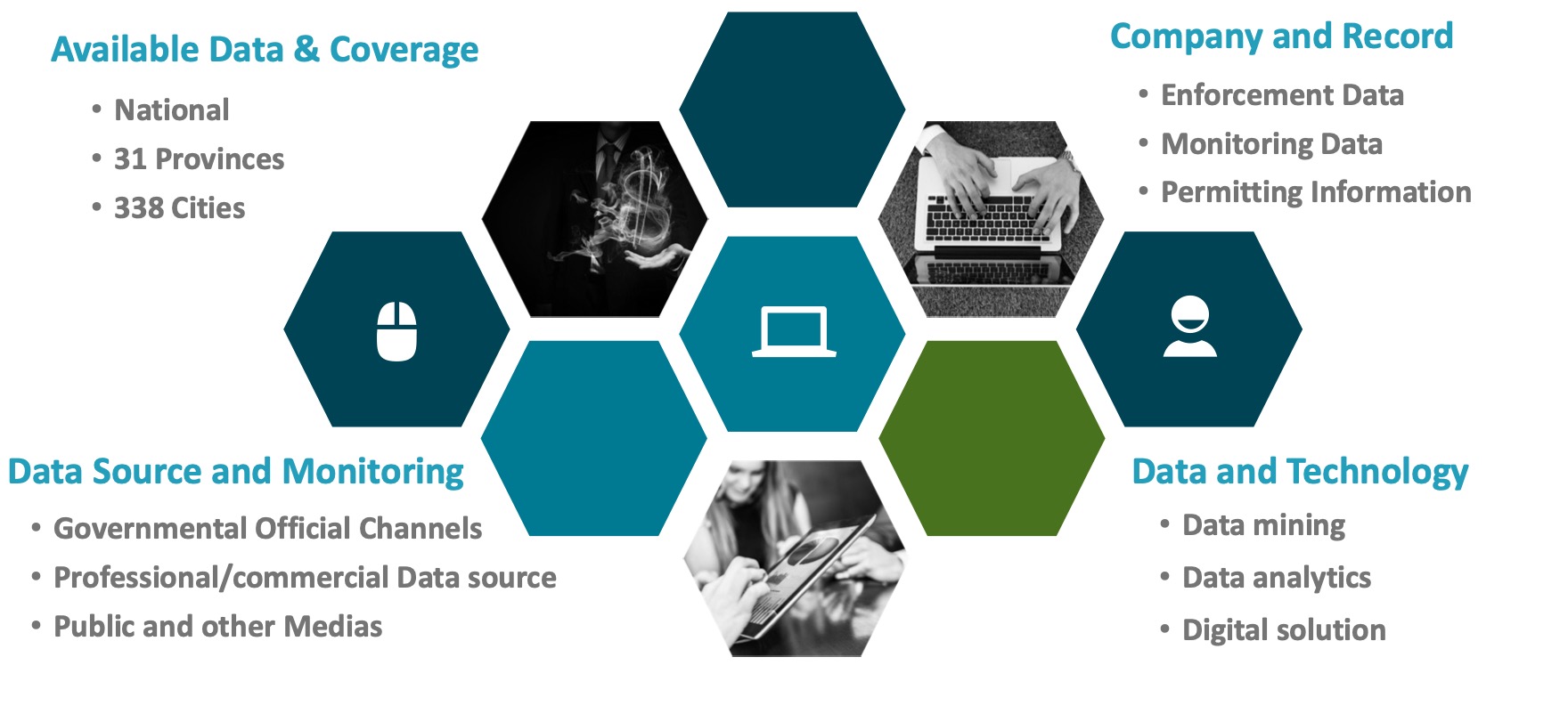
GREENMENT provides customized technical solutions to monitor and detect policy movement and latest news, among the vast information of traditional and new medias, related to central supervision planning, special government action planning, regional planning for production restriction and suspension due to environmental issues etc.